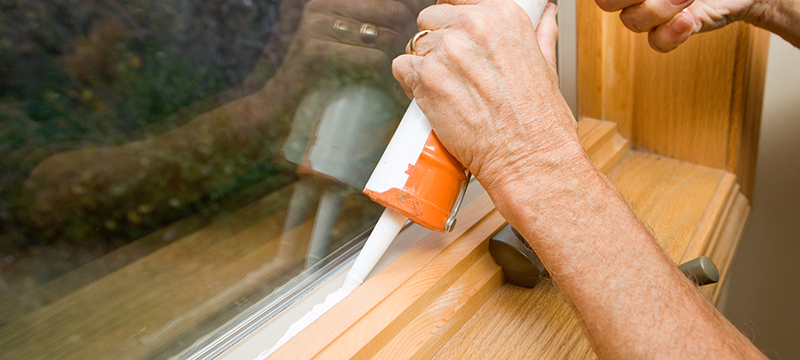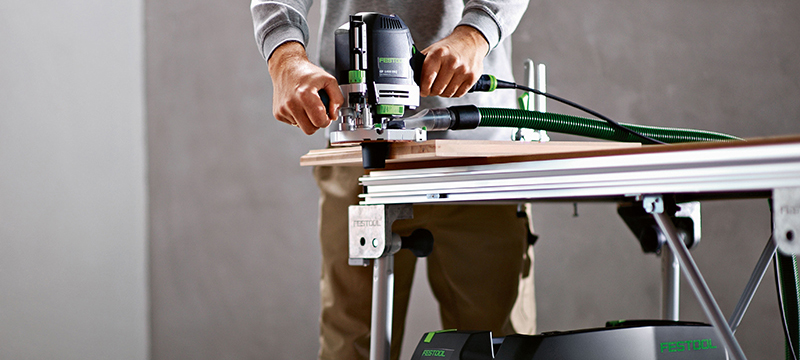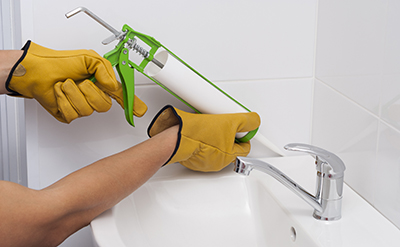
If you are a homeowner, a caulk gun is one of those tools you will eventually need. It is surprising how often you will use it throughout the lifetime of your home. Whether you need it to seal a new bathtub or fix a drafty window, the list of tasks around the house that require a caulk gun is endless.
Do not be deterred by the task of caulking with the right tools; it is a job that can be easily managed. Most caulking guns, which are not only affordable but also packed with advanced features, can simplify the job, regardless of your budget. Our guide is here to help you choose a caulk gun that suits your specific needs, making the task even more manageable.
How to Use a Caulking Gun
A caulking gun is a tool that lays a continuous bead of caulk by holding the tube and applying pressure from the bottom via a plunger, much like a drill. It is operated by a trigger that needs to be pressed to push the plunger through the tube. Whether on a budget or looking for a high-end option, our guide will equip you with the knowledge to use a caulking gun confidently.
Pressure Release System

The pressure release system is a crucial feature of any high-quality caulking gun. Nothing is more reassuring than knowing that your tool will not leak caulk when you set it down for a moment. Many manual caulking guns feature notched plunger arms that can be rotated to release pressure once the trigger is released. In contrast, some manual options have a pressure release trigger that will automatically activate once you let go of the trigger. Most automatic caulk guns release pressure without any additional effort. Finding a gun that releases pressure the way you prefer may require some trial and error, but it is a feature that will give you peace of mind in your purchase.
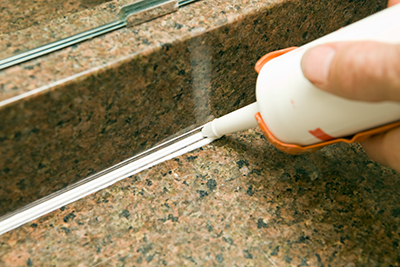
Leak-Proof Plunger
Another significant concern is a leak-proof plunger. Based on how caulk guns work, a lot of pressure is applied to the caulking tube so material can leak out of the bottom of the tube. Look for a plunger specifically designed to prevent any leakage from occurring while still being able to move smoothly through the tube.
Additional features to look for in a caulking gun are a rotating shaft that offers multidirectional applications, ladder hooks, finger guards, adjustable thrust ratios, and cushioned triggers.
Types of Caulking Guns
The main two types of caulk guns are manual and automatic. They each come with pros and cons that fit a variety of needs. Depending on how often you plan to use the tool can help determine what style of caulk gun you need. If you only use the weapon for a quick repair, a less-expensive option may be better, while a more expensive caulk gun could be a better choice for homeowners or professionals.
The essential features of manual and automatic caulk guns are a spout cutter and seal puncture tool.
- The spout cutter makes it easy and safe to snip the end of the caulk tube
- The puncture tool breaks the inner seal of the tube.
Manual Caulk Guns
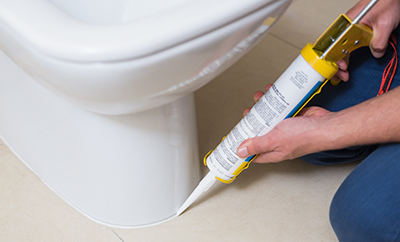
Manual caulking guns are inexpensive, so they will not break the bank. Try not to go too much on the low end. If you do, you might end up dealing with a mess and having to redo the project again. Manual guns will take more hand strength while using them. This means they may not be the best option if you have much caulking to do. Some manual options have notched plunger arms that can alleviate the following:
- The amount of effort to operate them.
- It can increase the thrust on the plunger.
Guns with notched plunger arms usually have a hooked end, so they can easily be hung on a ladder rung.
Automatic Caulk Guns
The two types of automatic caulking guns are pneumatic and battery-powered. Pneumatic guns attach to an air compressor, providing much power and limited effort during use. They are in the middle of manual and battery-powered guns when it comes to cost. Pneumatic options are not the best for homeowners because the hose is a hindrance and requires a compressor. These issues create an additional fee if you do not already have one. Pneumatic guns are good options for tradespeople, auto mechanics, and machinists.
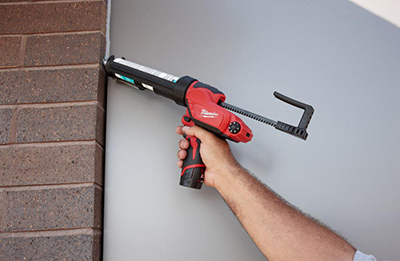
Battery-powered caulk guns are a good option for homeowners not as worried about the cost. They carry a higher price tag but offer the most convenient, effortless experience. The main disadvantage of battery-powered caulk guns is their increased weight. This is in comparison to other options due to the additional battery weight.
Shop manual and automatic caulk guns from some top brands at Acme Tools, including the following:
- Milwaukee Tool
- Cox
- Hilti
- Makita
- DEWALT

